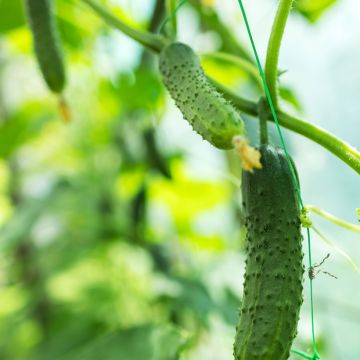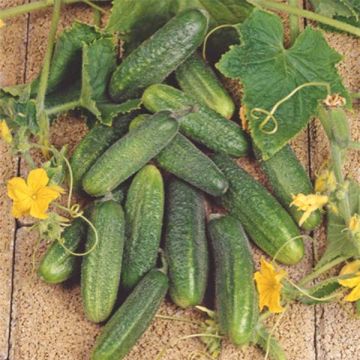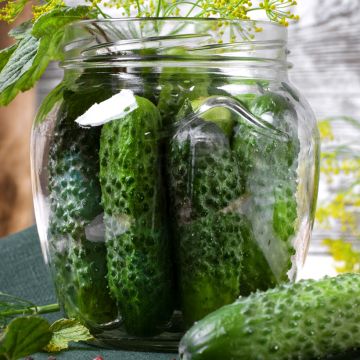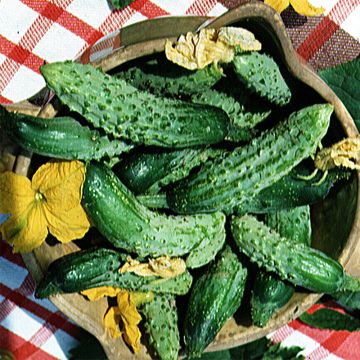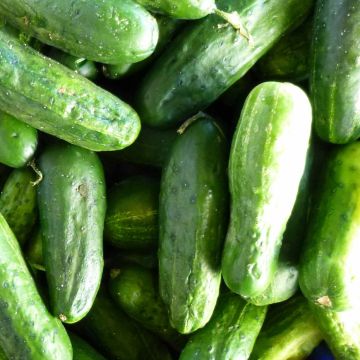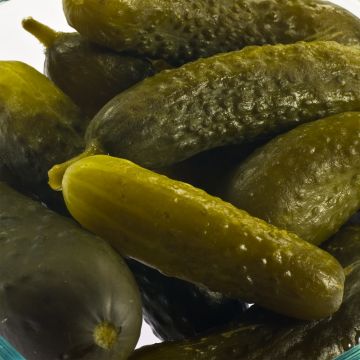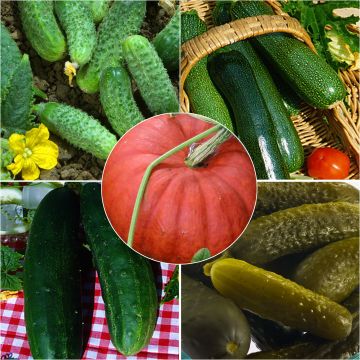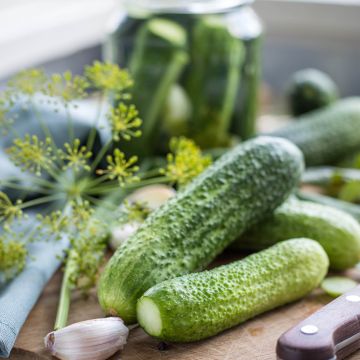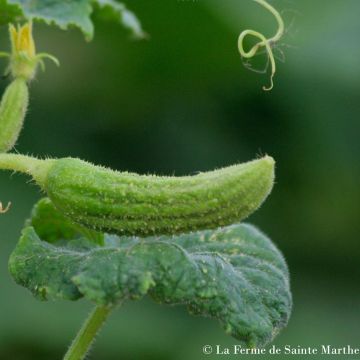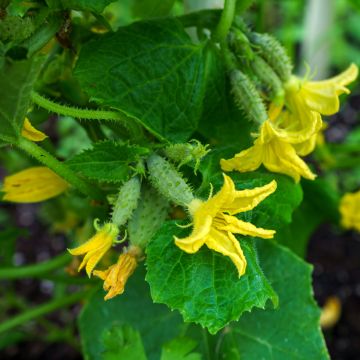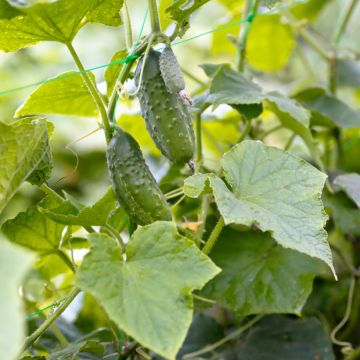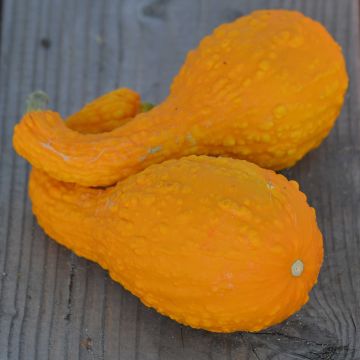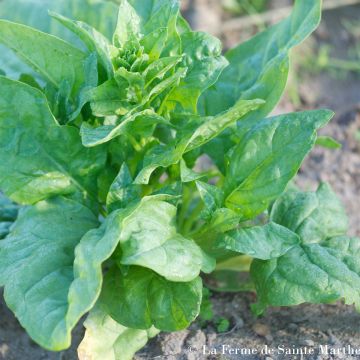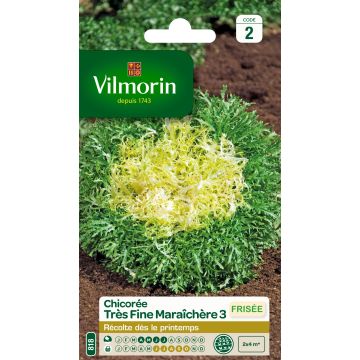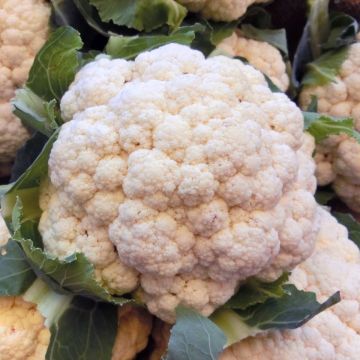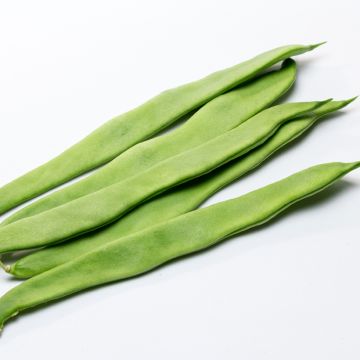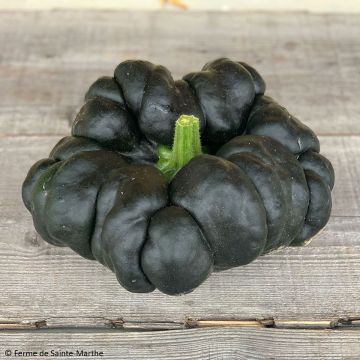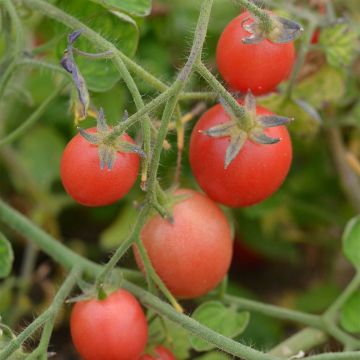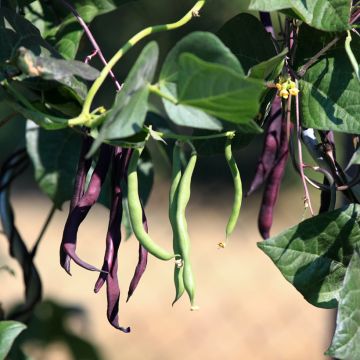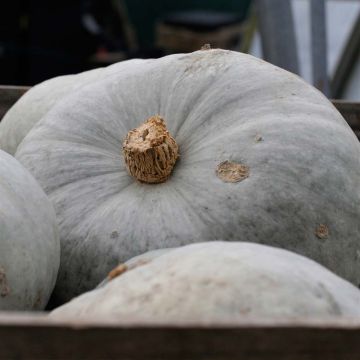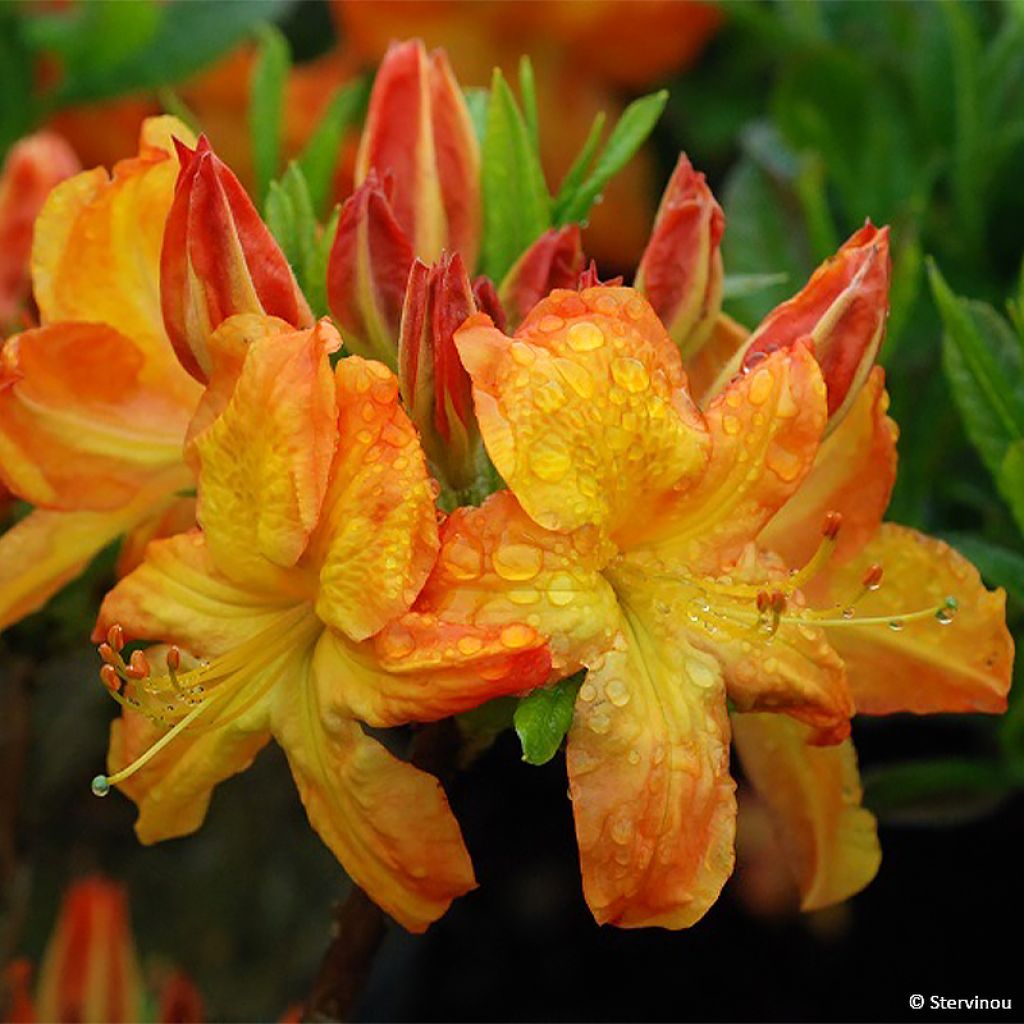

Cucumber Improved Bourbonne - Cucumis sativus
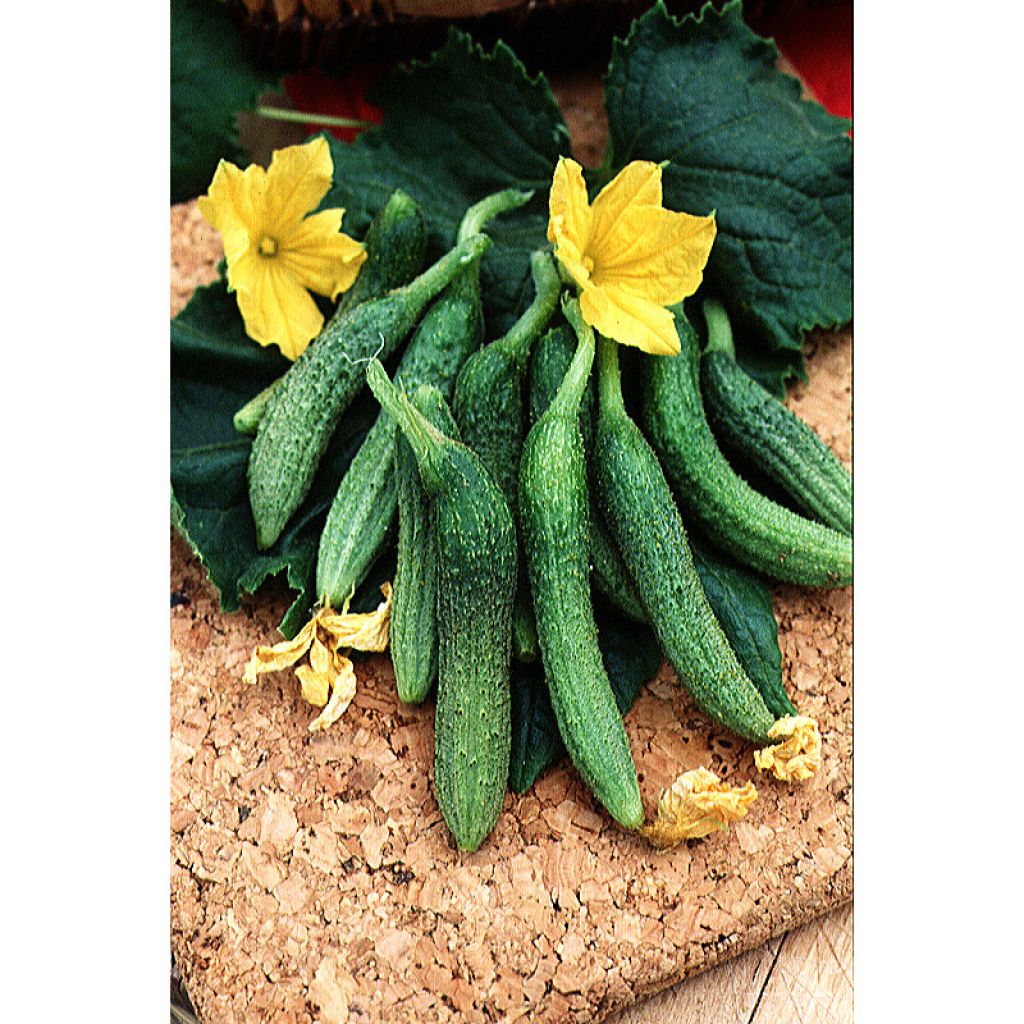

Cucumber Improved Bourbonne - Cucumis sativus
Cucumber Improved Bourbonne - Cucumis sativus
Cucumis sativus amélioré de Bourbonne
Cucumber
I would have liked to receive it, as it has already been more than 8 days since I placed my order. I am awaiting your response.
Gérard Poirier, 04/06/2016
Why not try an alternative variety in stock?
View all →This plant carries a 6 months recovery warranty
More information
We guarantee the quality of our plants for a full growing cycle, and will replace at our expense any plant that fails to recover under normal climatic and planting conditions.
Seed-only orders are dispatched by sealed envelope. The delivery charge for seed-only orders is €3.90.
Description
Cucumis sativus 'Bourbonne' is an improved gherkin. It is an early and productive variety that bears an abundance of long thin fruits with particularly firm and crunchy flesh. If forgotten, this gherkin can be consumed as a cucumber when fully ripe. Sow the seeds from March to June for a harvest from July to October.
Gherkins and cucumbers belong to the same species, but gherkins are harvested prematurely to be pickled in vinegar, accompanied by small onions, peppercorns, and tarragon.
It can be stored for a long time, and is traditionally enjoyed as a condiment in salads or to accompany cold meat dishes.
Gherkins appreciate light, loose, moist, and humus-rich soils. They like sunny exposures and temperatures between 18 to 22°C (64.4 to 68°F). They need regular watering.
Harvest: gherkins are harvested 3 to 4 months after sowing, before the fruits reach their final size. Harvesting should be done regularly, ideally every two days during the peak production period, as they grow quickly and could turn into cucumbers before you are ready! Regular harvesting also encourages the formation of new fruits.
Storage: freshly harvested gherkins can be stored for a few days in a refrigerator before being pickled in vinegar.
Gardener's tip: like all members of the Cucurbitaceae family, gherkins can be susceptible to powdery mildew, which is a white fuzz on the foliage. It is advisable to remove heavily affected leaves and spray with wettable sulphur every 2 weeks. In case of minor infestation, you can treat the plants with skimmed milk diluted to 10 to 20% in rainwater. As a preventive measure, avoid watering the foliage and ensure good ventilation in your greenhouse if growing under cover. Spraying with a horsetail decoction can also strengthen foliage resistance.
Report an error about the product description
Harvest
Plant habit
Foliage
Botanical data
Cucumis
sativus
amélioré de Bourbonne
Curcubitaceae
Cucumber
Cultivar or hybrid
Annual
Other Gherkin seeds
Planting and care
Sowing
Germination occurs at a temperature between 16 to 35°C (60.8 to 95°F). The emergence of seedlings generally takes 8 to 10 days.
Sow from March to June in pots or directly in the ground.
Prepare your pots one month before the planned planting date. Place 2 or 3 seeds in special sowing compost and water with a very fine spray. When two true leaves appear, keep only one plant per pot. Keep the young plant at a mild temperature, ensuring that the substrate remains moist but not waterlogged.
Sowing in open ground is done later, in warm soil. Sow in a small hole with 2 or 3 seeds and proceed as for sowing in pots.
When planting or direct sowing, maintain a distance of 1m (3ft) between each row and 50 to 60cm (20 to 24in) between each plant.
Cultivation
Cucumbers are a fairly demanding vegetable that require well-fertilised soil. It is wise to add mature compost (about 3 kg per m2) in autumn, by raking the soil to a depth of 5cm (2in), after having loosened the soil as with any vegetable cultivation. They prefer neutral soils (pH 7) but will also thrive in slightly acidic or alkaline soil (pH between 5.5 and 7.5).
Cucumbers can be grown flat. To save space, use their climbing nature by training them on a frame covered with wire mesh, inclined at 45%. This will provide beneficial shade for lettuces. You can also grow cucumbers up a teepee.
When the plants are vertically trained, concentrate on a single stem. Pinch this stem at a height of 2.5m (8ft). When grown flat, pinch above the second leaf to obtain two stems, which will themselves be pinched above the 4th leaf. The final pruning involves cutting above a leaf for each formed fruit.
Cucumbers pair well with corn, but avoid planting them near tomatoes and potatoes.
Seedlings
Care
Intended location
-
, onOrder confirmed
Reply from on Promesse de fleurs
Vegetable seeds
Haven't found what you were looking for?
Hardiness is the lowest winter temperature a plant can endure without suffering serious damage or even dying. However, hardiness is affected by location (a sheltered area, such as a patio), protection (winter cover) and soil type (hardiness is improved by well-drained soil).

Photo Sharing Terms & Conditions
In order to encourage gardeners to interact and share their experiences, Promesse de fleurs offers various media enabling content to be uploaded onto its Site - in particular via the ‘Photo sharing’ module.
The User agrees to refrain from:
- Posting any content that is illegal, prejudicial, insulting, racist, inciteful to hatred, revisionist, contrary to public decency, that infringes on privacy or on the privacy rights of third parties, in particular the publicity rights of persons and goods, intellectual property rights, or the right to privacy.
- Submitting content on behalf of a third party;
- Impersonate the identity of a third party and/or publish any personal information about a third party;
In general, the User undertakes to refrain from any unethical behaviour.
All Content (in particular text, comments, files, images, photos, videos, creative works, etc.), which may be subject to property or intellectual property rights, image or other private rights, shall remain the property of the User, subject to the limited rights granted by the terms of the licence granted by Promesse de fleurs as stated below. Users are at liberty to publish or not to publish such Content on the Site, notably via the ‘Photo Sharing’ facility, and accept that this Content shall be made public and freely accessible, notably on the Internet.
Users further acknowledge, undertake to have ,and guarantee that they hold all necessary rights and permissions to publish such material on the Site, in particular with regard to the legislation in force pertaining to any privacy, property, intellectual property, image, or contractual rights, or rights of any other nature. By publishing such Content on the Site, Users acknowledge accepting full liability as publishers of the Content within the meaning of the law, and grant Promesse de fleurs, free of charge, an inclusive, worldwide licence for the said Content for the entire duration of its publication, including all reproduction, representation, up/downloading, displaying, performing, transmission, and storage rights.
Users also grant permission for their name to be linked to the Content and accept that this link may not always be made available.
By engaging in posting material, Users consent to their Content becoming automatically accessible on the Internet, in particular on other sites and/or blogs and/or web pages of the Promesse de fleurs site, including in particular social pages and the Promesse de fleurs catalogue.
Users may secure the removal of entrusted content free of charge by issuing a simple request via our contact form.
The flowering period indicated on our website applies to countries and regions located in USDA zone 8 (France, the United Kingdom, Ireland, the Netherlands, etc.)
It will vary according to where you live:
- In zones 9 to 10 (Italy, Spain, Greece, etc.), flowering will occur about 2 to 4 weeks earlier.
- In zones 6 to 7 (Germany, Poland, Slovenia, and lower mountainous regions), flowering will be delayed by 2 to 3 weeks.
- In zone 5 (Central Europe, Scandinavia), blooming will be delayed by 3 to 5 weeks.
In temperate climates, pruning of spring-flowering shrubs (forsythia, spireas, etc.) should be done just after flowering.
Pruning of summer-flowering shrubs (Indian Lilac, Perovskia, etc.) can be done in winter or spring.
In cold regions as well as with frost-sensitive plants, avoid pruning too early when severe frosts may still occur.
The planting period indicated on our website applies to countries and regions located in USDA zone 8 (France, United Kingdom, Ireland, Netherlands).
It will vary according to where you live:
- In Mediterranean zones (Marseille, Madrid, Milan, etc.), autumn and winter are the best planting periods.
- In continental zones (Strasbourg, Munich, Vienna, etc.), delay planting by 2 to 3 weeks in spring and bring it forward by 2 to 4 weeks in autumn.
- In mountainous regions (the Alps, Pyrenees, Carpathians, etc.), it is best to plant in late spring (May-June) or late summer (August-September).
The harvesting period indicated on our website applies to countries and regions in USDA zone 8 (France, England, Ireland, the Netherlands).
In colder areas (Scandinavia, Poland, Austria...) fruit and vegetable harvests are likely to be delayed by 3-4 weeks.
In warmer areas (Italy, Spain, Greece, etc.), harvesting will probably take place earlier, depending on weather conditions.
The sowing periods indicated on our website apply to countries and regions within USDA Zone 8 (France, UK, Ireland, Netherlands).
In colder areas (Scandinavia, Poland, Austria...), delay any outdoor sowing by 3-4 weeks, or sow under glass.
In warmer climes (Italy, Spain, Greece, etc.), bring outdoor sowing forward by a few weeks.

































